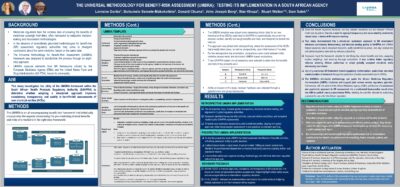Objectives
Methods
Results
Conclusion
This poster by Lorraine Danks, Boitumelo Semete-Makokotlela, Donald Chuma, John Joseph Borg, Star Khoza, Stuart Walker & Sam Salek was presented at the 2025 DIA Global Annual Meeting, 16-20 June 2025, Washington DC, USA.

